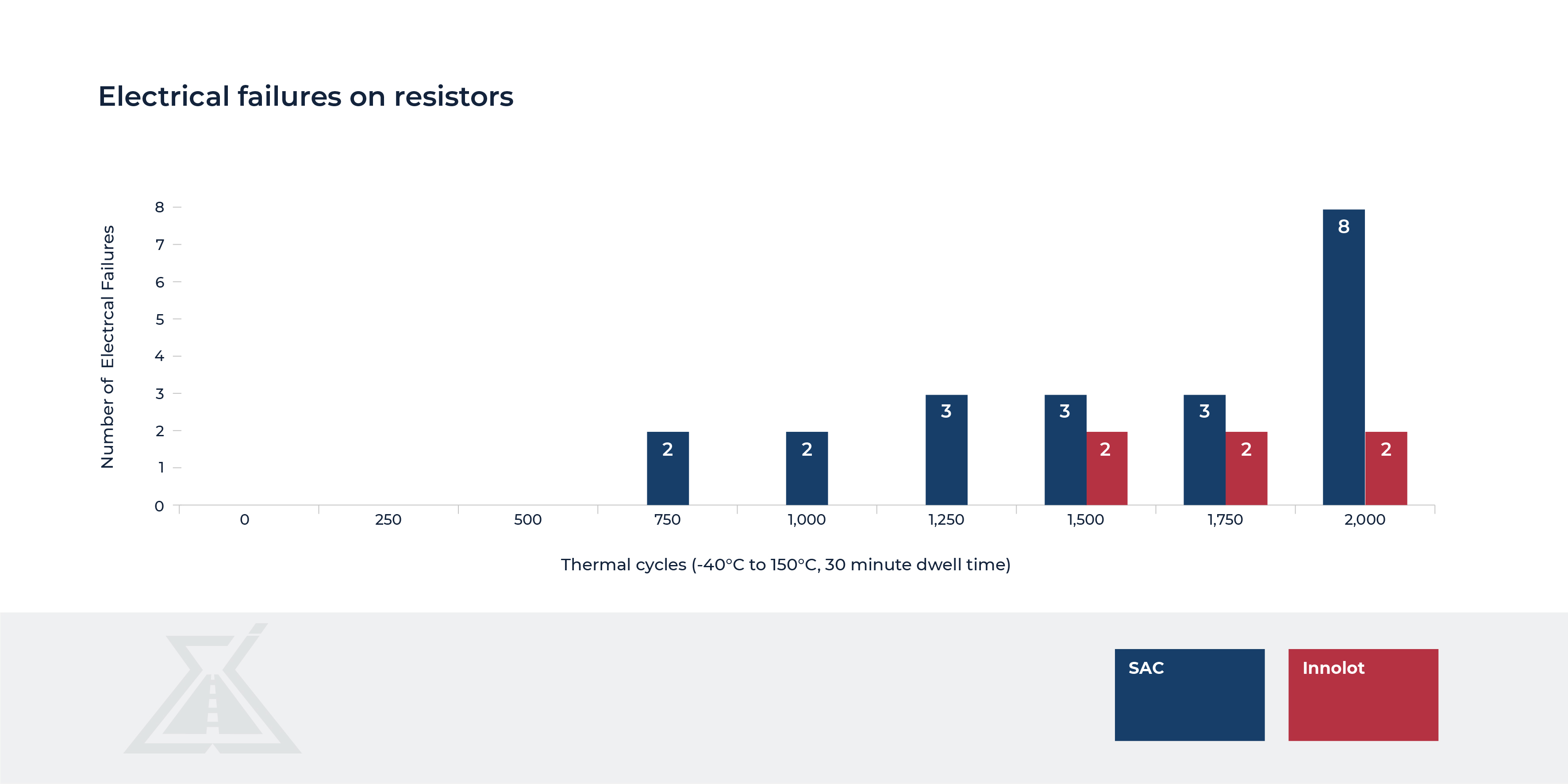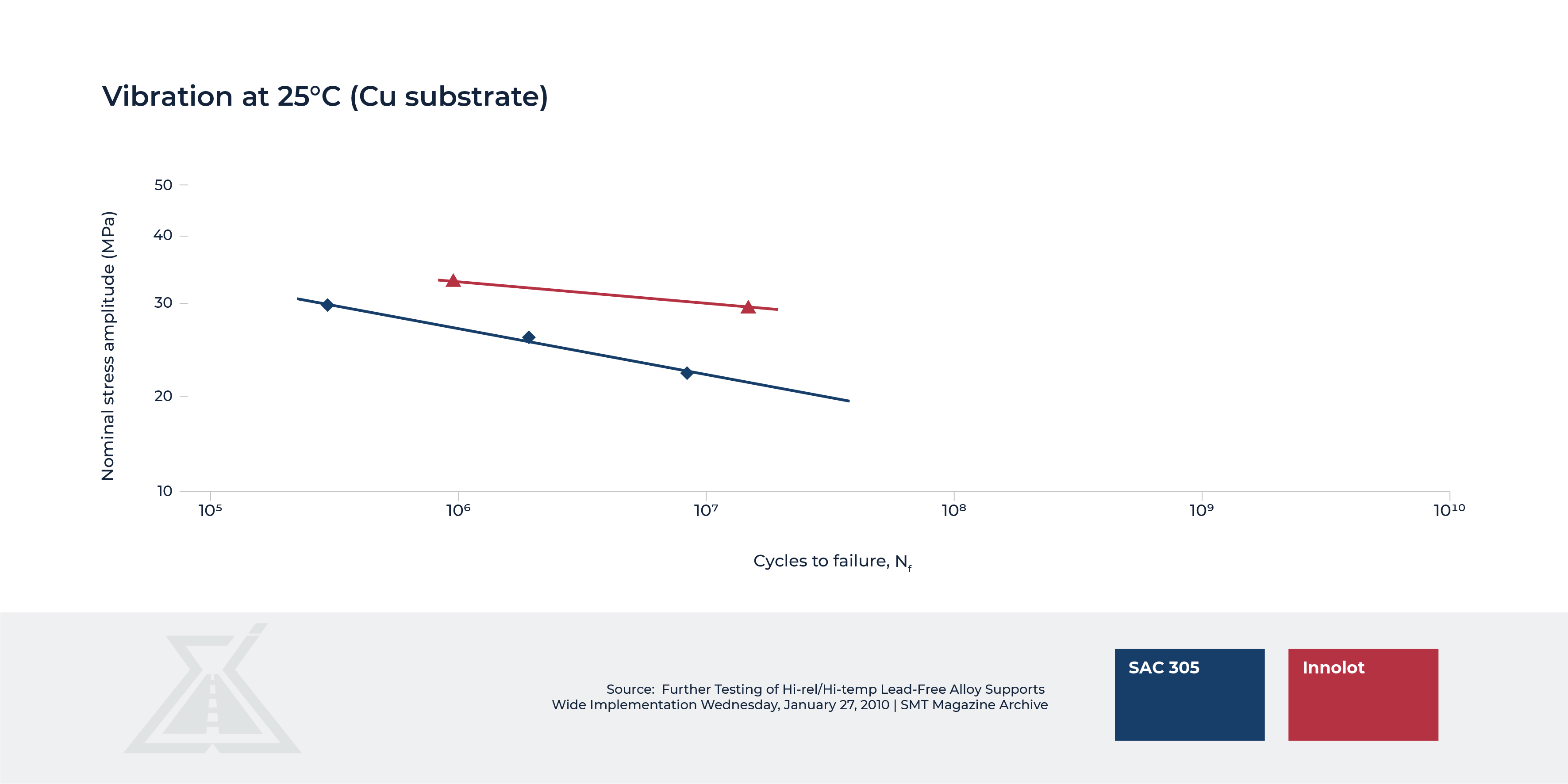
Why the materials matter
contact us

Introduction
As Advanced Driver Assistance Systems (ADAS) become more sophisticated, it places their electronic components under greater strain. This includes the pressure put on a system that has more function, and one that operates in an extreme environment, such as a vehicle.
In the automotive industry, there is growing awareness that materials used in vehicle electronics need to be more robust. This includes printed circuit board assemblies (PCBAs). They also must be more reliable to meet evolving OEM requirements.
Today’s semiconductor packages, circuit boards and assembly techniques support electronic systems used in telecoms and consumer electronics. However, they were not designed to perform in concert with so many other functioning systems. Vehicle electronics are subjected to constant vibration, high heat, and uncontrolled environments. Yet in this application, they must last as long-term vehicle components and maintain communication with many other systems inside and outside the vehicle. Material performance, durability, and consistency are key factors for successful adaptation into automotive applications. So, what are the key considerations for OEMs when it comes to evaluating materials for electronic systems?
Automotive megatrends
The four megatrends driving the automotive industry are Connectivity, Automation, Shared Rides and Electrification (CASE trends). They are significantly increasing the volume of electronic systems within vehicles. In many instances, these megatrends are happening at the same time – requiring high processing and performance of multiple systems at once. They influence each other. So, the critical nature of the application and consumer expectation affect desired performance.
A focus on user experience leads to the integration of more applications, which are in constant use. These systems support enhanced safety and a more enjoyable travel experience. For all systems to collaborate, electronics need greater speed and performance. This translates to higher operating temperatures within the system. Also, the vibration and harsh environments of automotive need to be considered.
These complex systems require greater thermal conductivity. This helps ensure safety critical applications, such as sensors, continue to work reliably. These sensors, which inform drivers of potential hazards, must function over the vehicle’s lifetime. Heat and more specifically, the temperature cycling of an electronic system is the major degradation factor.
The critical nature of ADAS functions mean that materials must have enhanced reliability and performance properties. This allows them to withstand pressure endured as a function of operation and environment. Vehicle applications must ensure consistent reliability and reduce the risk of accidents. Extending the lifetime of the electronic system under these extremes is a key area of focus for OEMs and Tier 1s. This starts by improving the reliability of joining materials. These are used in board-level assembly. Current materials have limitations. It is important to identify and overcome deficiencies to enhance the design.
Challenges with solder alloys
When electronic components are continuously heated and cooled, they expand and contract. This places pressure on the solder joint, which can result in a crack that alters electronic performance. Changing the resistance of the system may render it nonfunctioning. It will also shorten the lifespan of the component.
Research has long established that as the number of cycles increases, it builds strain energy within the solder. This leads to progressive mechanical fatigue/degradation of the solder joint.1, 2
In particular, creep strain is one of the most important time-dependent damage accumulative factors affecting solder joints. This reliability can lead to electronic failure. As well as safety, this can affect warranties, service costs and ultimately vehicle brand reputation.
The importance of reliability
The Automotive Electronics Council (AEC) establishes quality system standards. Their documents specify that alloys must conform with several material requirements. These include:
As well as meeting acceptable base cost and toxicity requirements.3
Safety-critical designs must always meet high-reliability requirements. For example, solder joints need to be able to withstand high pressures and temperatures. This ensures joints last the lifetime of the vehicle.
It is crucial that components in ADAS systems provide robust and reliable connections. However, the automotive market is still learning how to incorporate functions such as high speed, processing power, and radio frequencies from other industries. For example, a camera in a mobile phone is not continuously running. This is unlike a camera as part of a vision system in a vehicle.
Material considerations
There are many aspects that contribute to the life and robustness of an electronic system. Individual components are important to OEMs, to understand how they work in the overall build. Designs with SAC alloys cannot withstand extended exposure to temperature cycling. This can lead to random and unpredictable failure mechanisms. Therefore, the total lifetime value of vehicle components should be considered. This contrasts with the initial capital expenditure of materials alone.
High reliability alloys provide a viable solution that have been gaining traction with global Tier 1 suppliers. This is especially true for the demanding requirements of advanced safety systems. Studies show they can overcome common reliability issues in electronic assembles.4, 5
Consider that a working vehicle, such as a taxi, may be operating 24 hours a day. Even so, they must be able to perform without compromise to be fit for purpose.
Innolot high reliability alloy
Backed by multiple studies, Innolot is a well-researched, production proven product for high temperature use applications.6, 7 A consortium of car makers, Tier 1s and material suppliers adopted this solder alloy because it withstands underhood applications. After building confidence near-engine for over 10 years, additional automotive suppliers instituted the use of Innolot. They agree that it meets car makers high thermal cycle duration testing, specific to ADAS applications. Results from these studies (Innolot compared to a traditional SAC alloy), demonstrate significant improvements in thermal cycle resistance. This high reliability alloy increased the solder joint reliability by doubling the number of thermal cycles compared to SAC. It also increased resistance to vibrational stress.

Figure 1: Electrical failures on resistors
The combination of solid solution strengthening, and dispersion hardening helps to improve resistance to creep deformation. This occurs at elevated temperatures over time with solder alloys. Innolot has been designed to extend product life by improving electronic reliability. It is applicable even in the harshest automotive environments.8

Figure 2: Vibration at 25°C (copper substrate)
Summary
The complexity of automotive electronic systems means that advanced materials are required. Materials do matter. These ensure reliability of vehicle semiconductor packages and printed circuit boards, critical factors in ADAS design. It is important for OEMs to consider design and material choices early in the design process.
This will extend system life, enable design flexibility and help reliability of electronic hardware. These factors will reduce potential vehicle warranty costs.
Designed in collaboration with the automotive industry, Innolot outperforms SAC alloys. It extends product life by improving electronic reliability for both temperature and vibration exposure.
MacDermid Alpha Electronics Solutions has over 10 years’ experience supplying Innolot to the automotive industry for on- or near-engine applications. That experience now extends to many advanced safety systems.
References:
1 Hall (1984, 1987, 1991).
2 DfR Solutions, ‘Reliability at +150C’ [presentation https://www.dfrsolutions.com/hubfs/Resources/services/Reliability-at-150c.pdf?t=1509565547846]
3 Automotive Electronics Council, ‘Failure mechanism-based stress test qualification for integrated circuits', 2007
4 L. Clark et al., ‘Materials Considerations for Automotive Radar Designs: Increasing Reliability in Automotive Safety Systems’, presented at IPC APEX EXPO 2020
5 L. Clark et al., ‘Addressing the changing landscape of automotive electronic designs: Improving performance and robustness through proper material choice’, presented at IPC APEX EXPO 2021
6 L. Clark et al., ‘Addressing the changing landscape of automotive electronic designs: Improving performance and robustness through proper material choice’, presented at IPC APEX EXPO 2021
7DfR Solutions, ‘Reliability at +150C’ [presentation https://www.dfrsolutions.com/hubfs/Resources/services/Reliability-at-150c.pdf?t=1509565547846]
8 Lenora Clark et al.: Addressing the changing landscape of automotive electronic designs: Improving performance and robustness through proper material choice, 2021